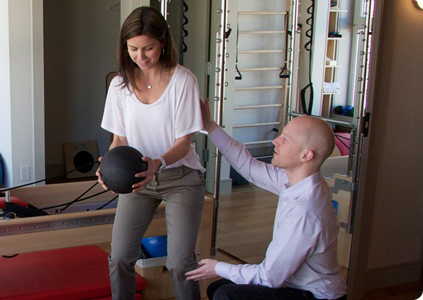Physical therapy is a vital component of the healthcare system, offering solutions for pain management, rehabilitation, and improved mobility. In this blog, we will explore the intricacies of physical therapy program, their benefits, and how they are transforming lives by restoring physical function and enhancing quality of life.
About the Program
The therapy programs are designed to meet the diverse needs of individuals suffering from injuries, chronic pain, or disabilities. These programs are tailored to assist patients in recovering from physical impairments, improving mobility, and achieving a higher level of independence in daily activities. The role of physical therapy is not just in healing but also in educating and empowering patients to maintain their health and prevent future injuries.
The Core of Therapy Programs
At the heart of any therapy program is the patient-centred approach. Physical therapists evaluate each patient’s unique condition and develop a customized treatment plan. This plan typically includes a mix of exercises, manual therapy, and education about body mechanics and self-care strategies.
Key Elements of Physical Therapy
Assessment and Evaluation: The first step involves a thorough assessment of the patient’s physical condition, medical history, and specific recovery goals.
Personalized Treatment Plans: Based on the assessment, therapists design a personalized treatment plan that may include strengthening exercises, flexibility routines, balance training, and other specialized techniques.
Pain Management: Physical therapists employ various methods to manage and reduce pain, such as ice or heat therapy, electrical stimulation, and ultrasound.
Rehabilitation Exercises: A core component of physical therapy, these exercises are designed to improve strength, range of motion, and flexibility, aiding in recovery and preventing future injuries.
Manual Therapy: This involves hands-on techniques to manipulate muscles and joints, enhancing mobility and relieving pain.
Education and Prevention: Therapists educate patients on proper posture, ergonomics, and body mechanics to prevent injuries and maintain a healthy lifestyle.
Benefits
Therapy programs offer a multitude of benefits, including
Improved Mobility and Function: These programs help patients regain mobility and return to their normal activities, whether it’s walking, climbing stairs, or participating in sports.
Pain Reduction: Through various therapeutic exercises and techniques, physical therapy can significantly reduce or eliminate pain.
Avoidance of Surgery: In many cases, physical therapy can help heal injuries and restore function to the point that surgery may not be necessary.
Management of Age-Related Issues: Physical therapy is effective in managing arthritis, osteoporosis, and other age-related conditions.
Recovery from Stroke or Paralysis: Physical therapy plays a crucial role in helping patients regain strength and balance after a stroke.
Improved Balance and Coordination: Balance training is an essential part of physical therapy, especially for older adults at risk of falls.
Who Can Benefit From Physical Therapy?
Physical therapy is not limited to any specific age group or condition. It benefits a wide range of patients, including
Those recovering from injuries (e.g., sports, work-related)
Individuals undergoing post-surgical rehabilitation
People with chronic conditions like arthritis or back pain
Older adults experiencing age-related physical changes
Children with developmental challenges or injuries
The Role of Technology in Physical Therapy
Advancements in technology have greatly enhanced physical therapy programs. Virtual reality, wearable technology, and telerehabilitation are some of the innovative tools being used to improve treatment outcomes and engage patients in their recovery process.
Choosing the Right Physical Therapy
Selecting the appropriate therapy is crucial. It’s important to seek out licensed and experienced physical therapists, consider the facility’s resources and technology, and ensure that the program aligns with your specific needs and goals.
Conclusion
Physical therapy program stand as pillars of hope and recovery for those dealing with physical impairments. They offer more than just physical healing; they provide a path to a better quality of life. With personalized care, expert guidance, and the use of innovative techniques, these programs empower patients to overcome challenges and achieve their highest potential in physical health and mobility. Whether recovering from an injury, managing a chronic condition, or striving for better physical health, therapy programs are a valuable resource in the journey to wellness and independence.



















